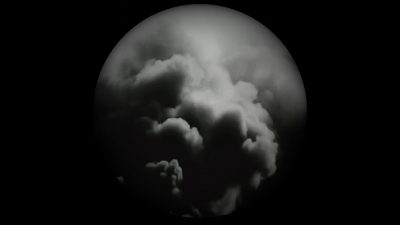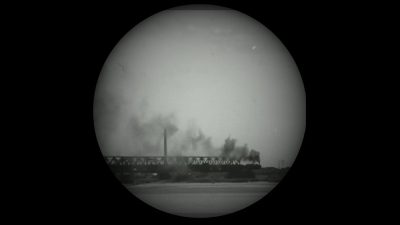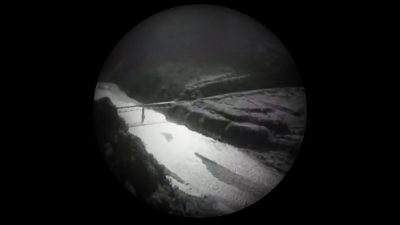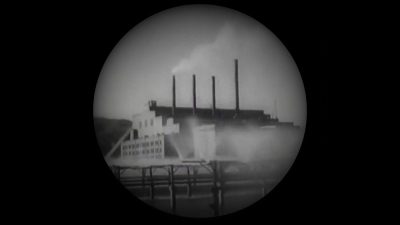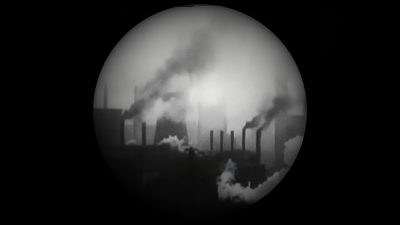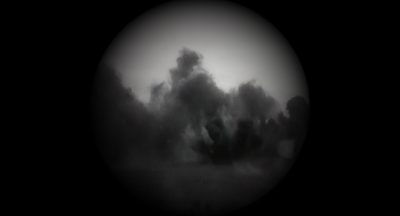For Whom the Bell Tolls (2017)
Sound and video installation
Double-channel video | 16:9 | HD | B&W | 9’01” | Stereo
One of its early productions, Battle on Shangganling Mountain (上甘嶺, 1956, Dir. SHA Meng, LIN Shan), depicted the Battle of Triangle Hill / Shangganling (上甘嶺戰役 | 삼각고지 전투) during the Korean War in 1952. The film glorifies the heroic sacrifices of the People’s Volunteer Army (中國人民志願軍) and their victory over United Nations forces. Despite the staggering casualties and the brutal nature of the battle, the film adopts a poetic lens, framing self-sacrifice through an extensive montage of idyllic natural scenery interwoven with the mountain landscape.
I visited Cheorwon-gun and the DMZ in search of these natural landscapes, though it is likely that the film’s scenic shots were taken outside Korea, possibly in China. At dusk, I arrived at a valley near Triangle Hill, along the border between South and North Korea. As night fell, a public announcement from the North Korean military resonated through the valley. Due to the geography of the terrain, the sound reverberated across the mountains, murmuring like a soliloquy. After receiving a brief translation of the message, I reconsidered my intentions for this field research trip—an investigation of PRC patriotic and idealistic discourse through moving images. Yet, the North Korean broadcast introduced another dimension to the historical and political narrative. It encapsulated the persistent tensions between North and South Korea while sharing the same rhetorical eloquence as Battle on Shangganling Mountain. However, when filtered through the reality of political and military manipulation, the contradictions and hypocrisies of propaganda became starkly apparent.
The day after my field research trip, on 28 August 2017, North Korea launched an intercontinental missile into the waters east of Hokkaido, Japan. The following week, Pyongyang declared the test of a hydrogen bomb a “great success.”
